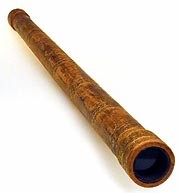On October 2, 1608, a Dutch optician applied for a patent for the telescope * It is not certain that he invented it, but this is the first documentation of the telescope, which a few months later also reached Galileo's hands * Update: Delay in the launch of the Hubble upgrade mission

Among all the excellent birthdays this week - the 50th anniversary of NASA (October 1st), the 51st anniversary of the launch of Sputnik (October 4th) hides a modest birthday for the telescope platform. More precisely 400 years of this important invention.
On October 2, 1608, officials in the Netherlands discussed a patent application by a certain Hans Lipperhey for a device that would "make it possible to see all things at a great distance, as if they were nearby." This is the earliest known mention of a telescope in scripture. A few months later, an Italian scientist - his name was Galileo Galilei - put his hands on such a device. And the rest is history.
According to Wikipedia Things were not so simple because five years earlier there were already on the market telescopes that magnified 3 times, and they were treated as entertainment devices, and because a man named Jacob Matius from the city of Alkmaar also submitted an application that month. It is possible that Lipperhay, a lens manufacturer from whom Matyos ordered lenses for the device, was able to reverse engineer, understand Matyos' purpose and get ahead of him.
With the help of the Dutch wonder device, Galileo was able to observe the moons of Jupiter and conclude that there are bodies that do not revolve around the earth, thus realizing that the earth itself also revolves around the sun as Copernicus claimed and not the other way around, as the church claimed; He also saw the sunspots and realized that it is not a perfect sphere and with these discoveries paved the way for modern astronomy which today uses telescopes with huge diameters, which cost billions of dollars to build, devices that look at wavelengths that are not in the range of human vision such as radio and infrared X radiation and more. Many telescopes are already scattered in space where the atmosphere does not interfere and all plans for establishing a lunar colony also include installing telescopes (at least automatic ones) on the side far from Earth.
The space telescope veteran, named after Edwin Hubble, is looking forward to his upgrade mission. However, due to its shutdown last week due to a computer malfunction, the preparations for the STS-125 mission of the space shuttle Atlantis were frozen in the meantime, which was supposed to upload new components in order to upgrade and repair previous faults discovered in it. Currently, the date on the STS-125 mission website has changed from October 14th to "date unknown". The next shuttle to fly into space will be Endeavour, which will take off on November 14 to the International Space Station, replace a crew member and bring it supplies and spare parts.
